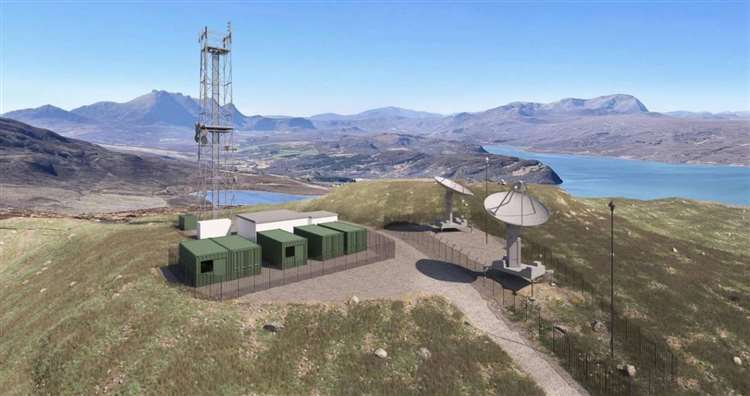15.07.2024

An artist's impression of the antenna park on top of Ben Tongue.
Danish entrepreneur and Sutherland landowner Anders Holch Povlsen, who launched an unsuccessful legal challenge to overturn planning consent for Sutherland Spaceport, is now fighting a proposal to move the facility’s antenna park to the top of a mountain.
Mr Povlsen’s conservation and ecotourism company, Wildland Ltd, is objecting to the controversial plan to separate the antenna park from the main spaceport site on the A’Mhoine peninsula and instead install it some five miles away on the summit of the 302m high Ben Tongue.
Wildland Ltd is now calling on members of Highland Council’s North Planning Applications Committee (NPAC), who are expected to determine the planning application later this year, to visit the site before making a decision.
The company’s objection, prepared by Wildland Ltd planning consultant Ian Kelly, states: “It is considered absolutely essential that the councillors conduct a full and detailed site visit to the Ben Tongue location before determining this application.”
Eight objections to the plan have so far been received, including one from Rachel and Ian Broughton who live at the foot of Ben Tongue and from Hamish Whittle, Skerray, who said the proposal would “destroy” Ben Tongue and was an act of “utter vandalism”.
Amid the increasing opposition, a representative from orbital launch services company Orbex, which is developing and will operate Sutherland Spaceport - work on which started last May - has been invited to speak to Tongue, Melness and Skerray Community Council at its meeting next Tuesday about the relocation plan. The community council has yet to make its views known to Highland Council.
Orbex announced last year that it was seeking planning permission for changes to the layout and design of the spaceport, permission for which was granted in 2020. As well as moving the antenna park, the company wants to make a number of changes to the main spaceport site, including reducing the size of the launch pad area.
Lesley Still, chief of spaceport operations, said at the time that the company had inherited the spaceport design from Highlands and Islands Enterprise and that when it was reviewed it became clear that the flight of the rockets could not be tracked from the main site.
Billionaire Mr Povlsen, who owns the Ben Loyal, Braesgill, Hope, Eriboll, Polla, Kinloch and Strathmore estates in Sutherland, objected to the original planning application for the spaceport, citing concerns about its impact on vulnerable protected areas.
Wildland Ltd challenged the Highland Council’s planning permission and a judicial review was held at the Court of Session in Edinburgh. However Judge Lord Doherty dismissed the case saying he was not satisfied that the “ground of challenge is well founded”.
In the latest submission, Ian Kelly states that Wildland Ltd’s land and development interests would be affected by the implementation of the spaceport project.
He states that Orbex should not have included the Ben Tongue antenna park site in the same planning application as the main spaceport site.
His submission reads: “The significance of the adverse effects from the antenna park would be more starkly obvious had it been a separate planning application. Perhaps the approach that is being taken reflects a lack of confidence in being able to secure a planning permission for a standalone antenna park”.
Wildland Ltd is concerned about lighting and noise on the summit of Ben Tongue from the rocket launches, particularly those taking place at night; the impact of the antenna park on protected species on Ben Tongue; and the impact of increased traffic and visitors.
Mr Kelly states: “It is easy to imagine that many interested spectators might be drawn to this elevated viewpoint.”
Among the other objectors to the spaceport application is John Williams, a retired physics teacher who lives in Talmine.
Quelle: The Northern Times
